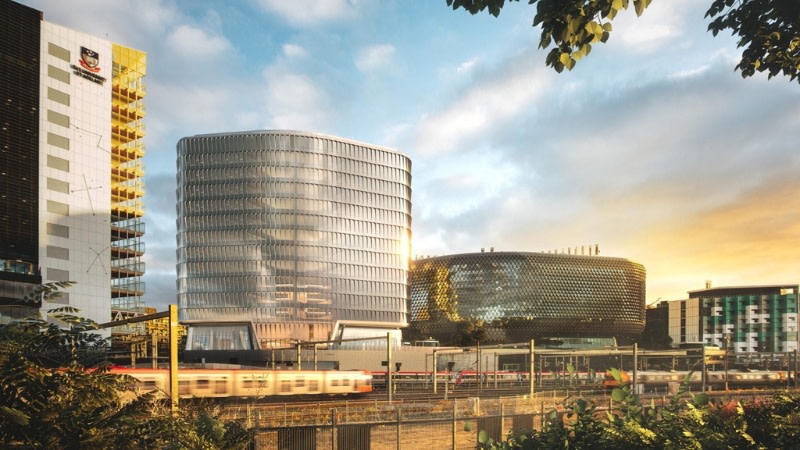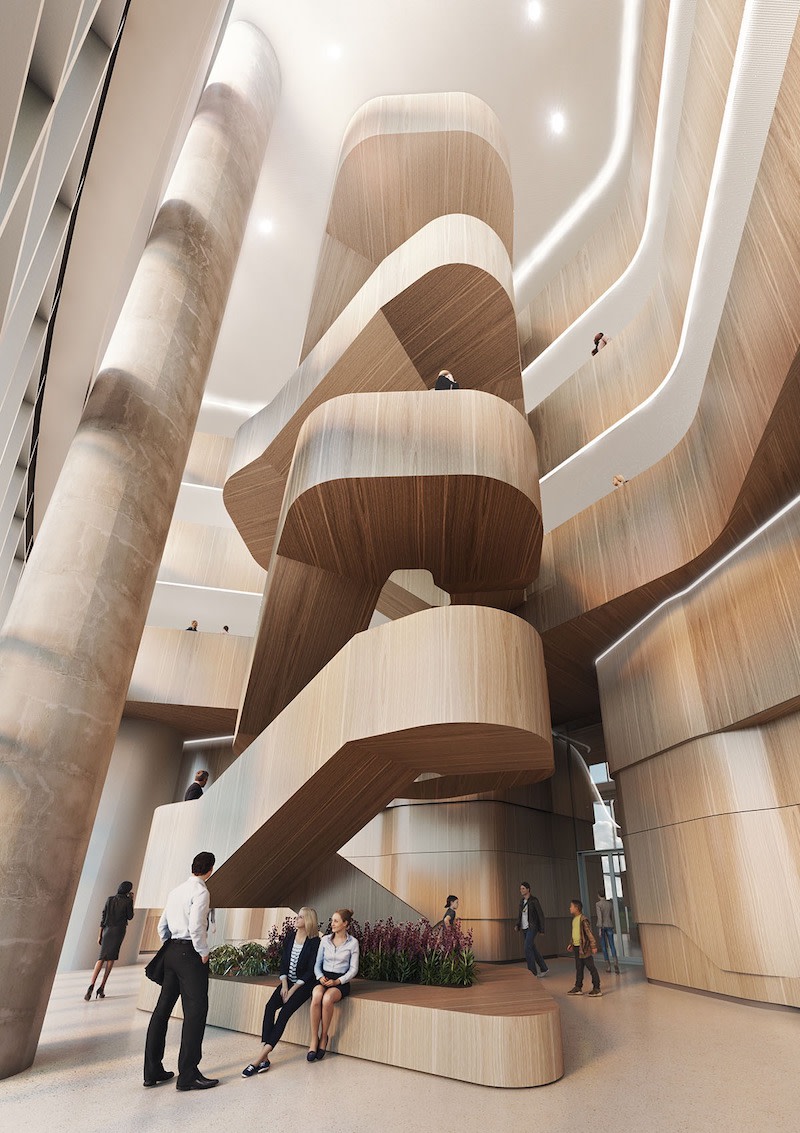In this article, Trevor Cooke, the chief executive of Commercial & General, one of South Australia's most significant developers, with a project portfolio in excess of $2 billion in end value, goes deep on its work on the Australian Bragg Centre in Adelaide…
The topping out of any construction project is a milestone worth celebrating as the building reaches its full height.
However, as the project originators of the Australian Bragg Centre for Proton Therapy and Research being built in Adelaide’s BioMed City precinct, our pride goes much deeper than that.
In fact, the real story of this building lies 16m underground.
In early April, we commemorated topping out with our project partners and made a point of giving everyone the chance to view the three-storey bunker that will house Australia’s first proton therapy unit.
The highly targeted nature of proton beam therapy has the potential to reduce long-term damage to healthy tissues, making it a more suitable treatment option for complex tumours near important structures, such as the brain, spinal cord or eyes.
This reduced risk to critical structures makes it a particularly advantageous treatment option for paediatrics, adolescent and young adult patients who are at greater risk of both long-term damage and side effects from the more conventionally used photon radiotherapy treatment.
We are no strangers to delivering complex medical infrastructure. For example, our Calvary Adelaide Hospital project is the largest private hospital ever built in South Australia and our partnership with Icon Group will deliver three all new cancer centres.
However, the skillset required to deliver the country’s first proton therapy unit—from project finance packaging and government negotiations to engineering and construction—can be compared with the challenge of building nuclear submarines.
▲ A render of the Bragg Centre in Adelaide’s BioMed City precinct.
Not only has it never been done before in Australia, but this proton therapy unit is also one of the very first synchrotron installations in the Southern Hemisphere.
The unique expertise that we have developed at Commercial & General means we have unmatched capability of delivery in biomedical and healthcare assets. We believe we are the only property firm in Australia with a medical physicist on staff.
It was the expertise of this team that paved the way for the involvement of The Australian Nuclear Science and Technology Organisation and supported the requisite Medical Services Advisory Council approvals, tasks which were crucial to the success of the project.
Both state and federal governments have been key enablers of the project, with the Commonwealth providing $68 million in a National Partnership Agreement, while the SA government is a cornerstone tenant through the Department of Health and Wellbeing and a funding partner. Commercial & General was also an initial investor to ensure the project could succeed.
Our company engaged with specialist consultants from Australia, Europe and the US to ensure construction of the bunker meets the specific tolerances required of proton therapy technology, including radiation shielding and vibration minimisation.
Construction involved the removal of 66,000 tonnes of earth and the pouring of 7,000sq m of shielding concrete across 29 separate concrete pours with 281 precast panels, 121 tonnes of embedded steel shielding plates and three individual shielding doors weighing approximately 220 tonnes in total.
The building will have 33,000sq m total floor area across 15 levels with 11 floors of dry lab space. It will be home to leading cancer researchers—including those from the South Australian Health and Medical Research Institute (SAHMRI)—and is already 80 per cent leased.
Construction of the building by Lendlease is on track to complete later this year ahead of the installation of the proton therapy unit. Following extensive testing and calibration, the unit is expected to treat its first patients around 18 months later.
▲ A render of inside the Bragg Centre.
From that point in time, Adelaide will become a focal point across the Southern Hemisphere for this kind of treatment.
At the moment, patients needing proton therapy treatment have to go overseas. When in full operation, the Australian Bragg Centre’s proton therapy unit will have the ability to treat approximately 600 to 700 patients per year with around half of these expected to be children and young adults.
Just as importantly, this centre will be a leading site internationally for research into proton therapy, which is still a relatively new cancer-fighting technology. There is still so much medical science doesn’t know in terms of what cancers, and potentially other conditions, could be more safely and effectively treated with proton therapy.
It will add to Adelaide’s national leadership in cancer research and treatment and further cement the city as a destination for the best and brightest in the medical profession – many of whom will be working on the floors of the Australian Bragg Centre.
For us, we are enormously proud to once again be delivering critical health infrastructure on brief, on budget and on time.
However, as I mentioned before, it goes deeper than that.
Proton therapy will save the lives of Australians with cancer and mean they no longer need to relocate to the other side of the world for treatment during what is already a traumatic time in the lives of them and their families.
That’s truly a project with impact.
Learn more about the Australian Bragg Centre here.
The Urban Developer is proud to partner with Commercial & General to deliver this article to you. In doing so, we can continue to publish our daily news, information, insights and opinion to you, our valued readers.











